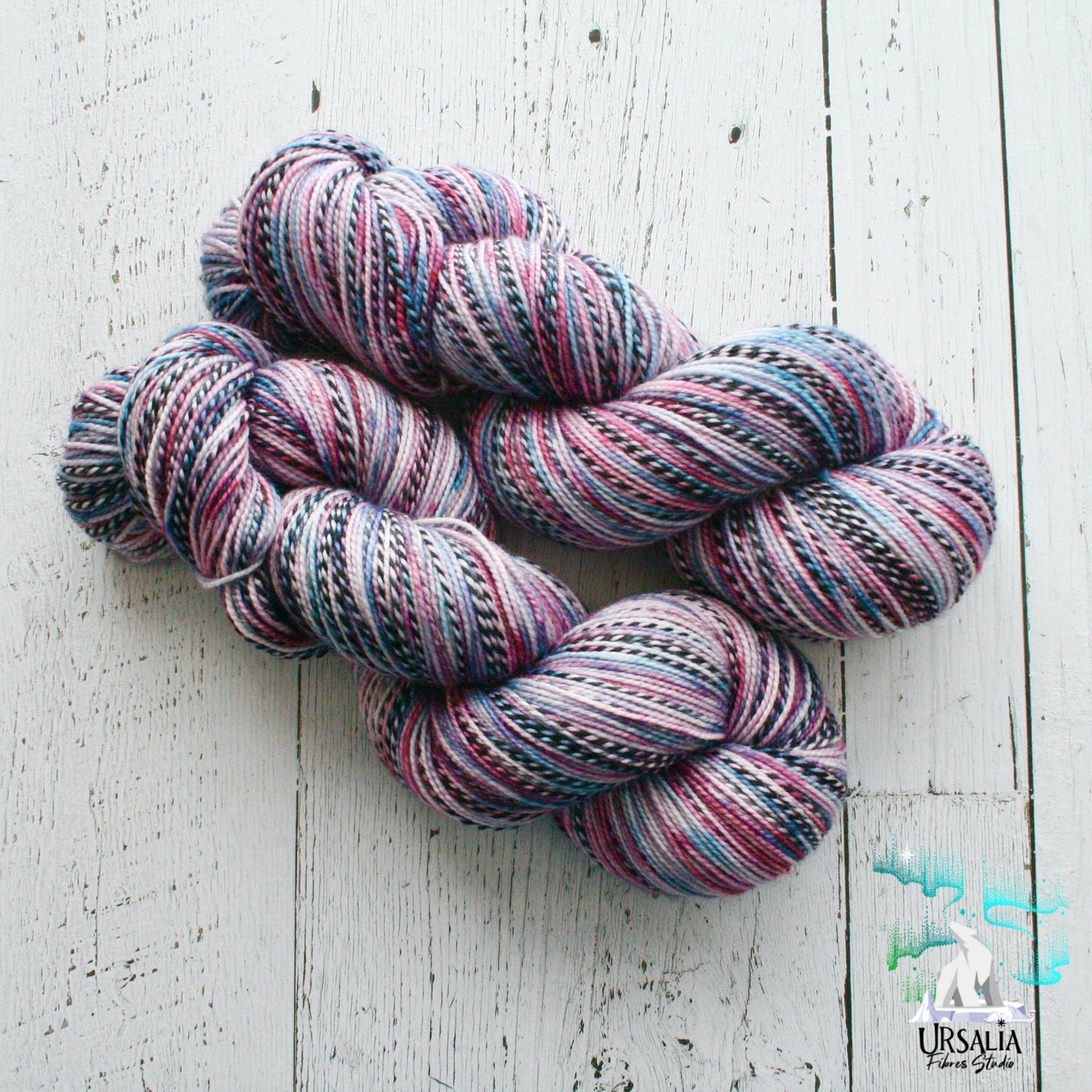Avalon Sock
Avalon Sock
Out of stock
Couldn't load pickup availability
Avalon Sock, a distinctive hand-dyed sock yarn: 80% Superwash Merino, 20% nylon. Fingering weight/Sock; 400 yds/366m per 100g skein. Dyed in Quebec, Canada by Ursalia Fibres Studio.
Hand wash, lay flat to dry. The colours may vary slightly depending on your screen. Given the technique used to create Avalon Sock, all skeins are unique. Winding required.
Learn about the Celtic meaning of each yarn name here.
Prices shown in CAD not including taxes or shipping.
Canadian shoppers: $10 flat rate shipping or FREE shipping with purchase of $100 or more. Now available: Local pickup from 675 Arlington Park Place, Kingston, Ontario.
Shipping to USA and other countries: Canada Post shipping options are shown at checkout.
For knit or crochet pattern ideas, visit Ravelry.com.
A b h a r t a c h
In Celtic mythology, Abhartach, also known as the dwarf king, was a magical Irish dwarf who rose from his grave after being killed and walked the land at night to kill people and drink their blood.
A e v a l
In Celtic mythology, Aeval (or Aibell) was the fairy queen of the sidhe in the province of Munster in Ireland.
A f a n c
In Celtic mythology, Afanc was a lake monster. It's said to be a crocodile, dwarf, demon or beaver hybrid. Like most lake monsters, it was said to prey upon any foolish enough to fall into or swim in its lake.
B a n s h e e
In Celtic mythology, Banshees are supernatural beings whose mournful keening or wailing screaming at night was believed to foretell the death of a member of the family of the person who heard the spirit.
B a u c h a n
In Celtic mythology, a bauchan was a type of hobgoblin that was mischievous and sometimes dangerous but very helpful if needed.
B o d a c h
In Celtic mythology, a bodach was a trickster, a bogeyman.
B r o w n i e
In Celtic mythology, a brownie was a household spirit who came out at night to perform chores and farming tasks. The owners of the house had to leave a bowl of milk or cream (or some other offering) for the brownies.
C a t S i t h
In Celtic mythology, the Cat Sith was a fairy creature resembling a large black cat with a white spot on the chest, who haunted the Scottish Highlands and stole the souls of the unburied dead.
D u l l a h a n
In Celtic mythology, the Dullahan was a headless horseman/horsewoman who carried its head under its arms. On its black horse, the Dullahan roamed the fields at night, carrying a whip made of human spine.
F i d e a l
In Celtic mythology, a fideal was a highland water demon that inhabited Loch Na Fideil. It used to drag woman and children under the water to devour them.
G l a i s t i g
In Celtic mythology, the glaistig is an ambivalent ghost that appears as both a malign and benign creature. Some stories have her luring men to her lair via either song or dance, where she would drink their blood. Other tales have her casting stones in the path of travelers or throwing them off course. In some benign incarnations, the glaistig is a type of protector of cattle and herders.
G r o g a n
In Celtic mythology, a grogan was a Highland brownie who helped around the farms.
M o r g a w r
In Celtic mythology, the morgawr was a sea serpent.
N i c n e v e n
In Celtic mythology, Nicneven was a fairy queen.
S e l k i e
In Celtic mythology, selkies were seal spirits who could take human form on land and often intermarried with mortals.
U n a
In Celtic mythology, Una was the queen of the fairies.
































